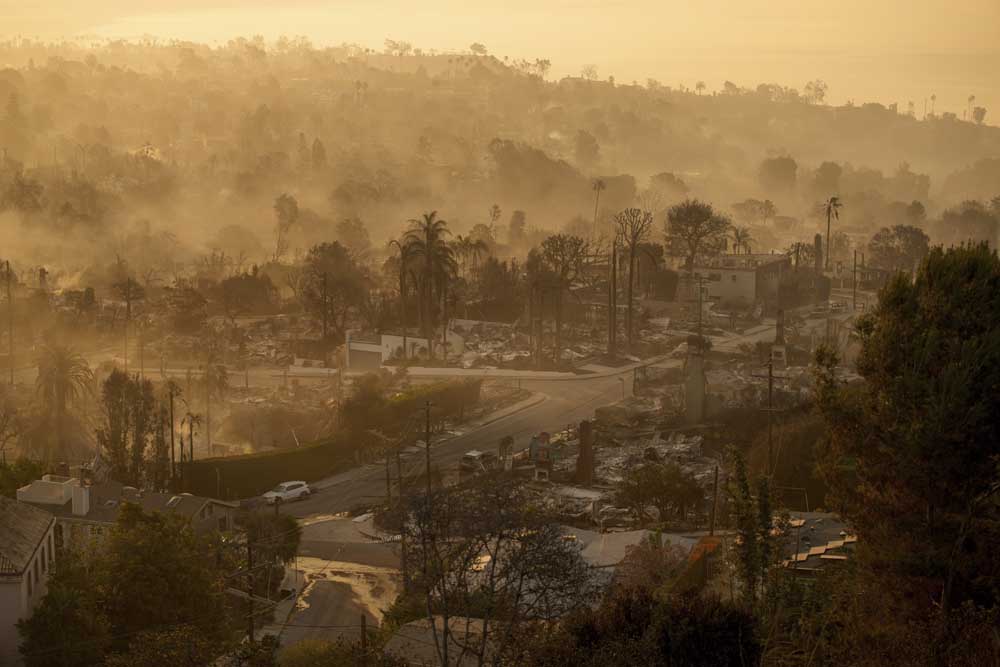EDITORIAL: Public lands policies a blueprint for fire mitigation
Published 7:06 am Saturday, February 1, 2025

- The devastation of the Palisades Fire is seen in the early morning in the Pacific Palisades neighborhood of Los Angeles on Jan. 10.
With wildfires still scorching Southern California and bringing renewed attention to land-management policies, states throughout the country would be wise to heed lessons from the State of Washington.
No state, particularly throughout the West, is immune to damaging and costly blazes, but Washington has improved its resiliency in recent years through proactive, bipartisan action. Much of the credit goes to Hilary Franz, who spent eight years as the state’s public lands commissioner before declining to seek reelection last year; her approach should provide a blueprint for governments throughout the nation.
To start with is the fact that Washington has an elected statewide commissioner of public lands. That office-holder oversees the Department of Natural Resources, which manages 3 million acres of state trust lands and 2.6 million acres of state-owned aquatic lands.
Western states typically have broad swaths of public lands, owned by the federal government or the states themselves. This month, the U.S. Supreme Court declined to hear a lawsuit filed by Utah that challenged the federal government’s ownership of one-third of the state’s terrain. Although the suit was rejected, control of public lands promises to be an ongoing political issue.
Washington is one of five states that has an elected official — rather than an appointed one — to oversee state-owned lands. That provides independence that is essential to preserving the landscape for the good of the public rather than the executive branch.
In doing that, Franz made significant progress dealing with the threat of wildfires. As a passionate and effective advocate, she garnered bipartisan support for initiatives to improve forest health and to quickly suppress fires.
“In the last three years, 93 percent of wildfires in the state have been contained to less than 10 acres,” she told The Columbian’s Editorial Board last year, weeks before leaving office.
In 2024, approximately 1,500 fires in Washington burned 311,000 acres — an average of 207 acres. In Oregon, nearly 2,000 fires burned almost 2 million acres — approximately 1,000 acres apiece.
The disparity is a direct result of increased funding from the Legislature to provide quick-response teams, immediately identify hot spots and deploy firefighting resources throughout the state. That strategy has been effective and must receive continued attention.
“We have to avoid a false sense of security,” Franz said. “We need the Legislature to still support that funding.”
Dave Upthegrove, who was elected to succeed Franz, should continue to pursue that initiative. The centerpiece of his campaign and his early weeks in office has been to pause the planned sale of some state-owned timber. The strategy is questionable and should not be allowed to distract from the more important work of making forests resilient to wildfires.
Meanwhile, other states also can learn from Franz’s approach to managing forests and to mitigating the inevitable threat of fires. Her work for the Department of Natural Resources included vast efforts to help communities and property owners create “defensible spaces” around structures. Being defensible also should require a rethinking of where development is allowed to occur in the rural-urban interface.
Strong policies and adequate preparation have not made Washington immune to wildfires, but they have helped to mitigate the damage. They also have provided clear guidelines that should be adopted by other states.





